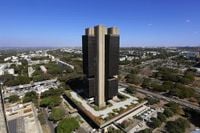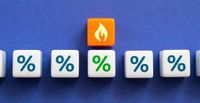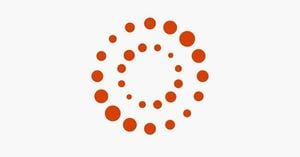On Wednesday, May 7, 2025, the Comitê de Política Monetária (Copom) of the Central Bank of Brazil is set to meet to determine the new basic interest rate for the economy, known as the Selic. Analysts widely anticipate an increase of 0.5 percentage points, which would elevate the Selic to 14.75% per year, marking the highest level since August 2006. This potential hike is largely driven by ongoing inflation concerns, fiscal uncertainties, and a volatile international economic landscape.
Currently, the Selic stands at 14.25%, a rate reminiscent of the economic crisis that unfolded during the presidency of Dilma Rousseff. If the increase is confirmed, it will be the sixth consecutive rise in the Selic, reflecting the Central Bank's commitment to controlling inflation. According to the latest Focus bulletin from the Central Bank, the forecast for inflation remains above the target set by the Monetary Council, further justifying the anticipated rate hike.
As the Selic influences other interest rates throughout Brazil, its increase will directly impact consumers and businesses alike. Financial expert Leonardo Ramos from Portal iG noted, "With the Selic at this level, financing options for real estate, vehicles, and personal loans become significantly more expensive." This change restricts access to credit, dampening consumer spending and potentially slowing down economic activity.
The implications of a higher Selic extend beyond just increased loan costs. The average default rate on free credit was reported at 3.2% in March 2024, and as the cost of borrowing rises, this figure could trend upwards. Furthermore, approximately 42% of the R$ 3.9 trillion in credit extended to families is subject to variable interest rates, meaning that many individuals could face escalating repayment burdens.
In the context of rising inflation, which reached 4.9% over the past year, the Central Bank is under pressure to ensure that inflation remains within acceptable limits. The Copom's decisions are closely scrutinized, as they set the tone for future monetary policy. The meeting's official statement will likely shed light on the committee's outlook and potential future actions, although it may not provide clear guidance.
In addition to domestic pressures, external factors also weigh heavily on Brazil's economic landscape. The ongoing trade tensions, particularly with the United States, have contributed to commodity price fluctuations and currency volatility. The dollar is projected to end the day at approximately R$ 5.70, reflecting market dynamics influenced by both local and international events.
Market analysts are keenly aware of the broader implications of the Copom's decision, especially in light of the Federal Reserve's (Fed) meeting occurring on the same day. The Fed is expected to maintain its interest rates between 4.25% and 4.5%, which could lead to a stronger dollar and impact capital flows to emerging markets like Brazil.
According to Carla Argenta, chief economist at CM Capital, the Central Bank's primary goal is to ensure inflation remains within the established target. "In the current climate of elevated economic activity and persistent inflation, higher interest rates are necessary to keep prices in check," she explained.
However, this approach may pose risks if economic growth continues unabated. Should future economic data indicate rising inflation and robust activity, the Central Bank may need to adopt an even more contractionary stance, potentially leading to further rate increases.
Looking ahead, projections indicate that the Selic could reach 15% by June, with some analysts suggesting a smaller adjustment of 0.25 percentage points at the next meeting. The evolving economic landscape requires the Central Bank to remain vigilant, balancing growth with inflation control.
The Copom's upcoming statement will be pivotal, as it will outline the committee's stance and anticipated actions moving forward. Analysts emphasize the importance of the language used in the communication, as it will signal the Central Bank's commitment to managing inflation expectations and maintaining credibility.
In summary, as the Copom prepares for its critical meeting, the financial markets are poised for significant changes. The anticipated rate hike reflects a broader strategy to combat persistent inflation and stabilize the economy amidst a challenging global backdrop. With the stakes high for both consumers and investors, all eyes will be on the Central Bank's decisions and the subsequent implications for Brazil's economic future.






